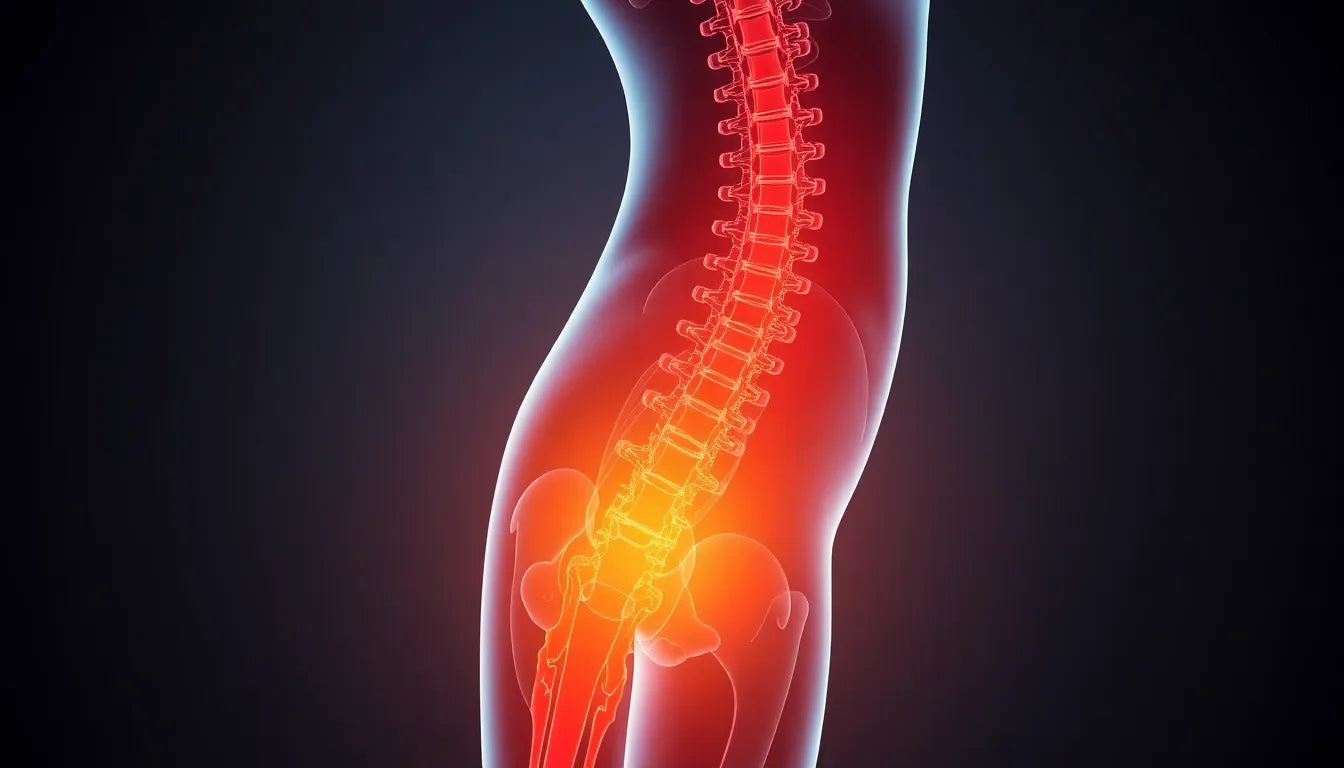Sciatica is a condition that affects millions of people worldwide, often causing significant discomfort and impacting daily life. This common ailment is characterized by pain that radiates from the lower back, travels through the buttocks, and extends down the legs. Understanding the symptoms of sciatica in the leg is crucial for early intervention and effective management, allowing individuals to find relief and maintain their quality of life.
What is sciatica?
Sciatica is not a diagnosis in itself but rather a symptom of an underlying medical condition. It occurs when there is irritation or compression of the sciatic nerve, which is the longest nerve in the body. This nerve runs from the lower back, through the hips and buttocks, and down each leg. When this nerve becomes compressed or irritated, it can lead to a range of symptoms that vary in intensity and duration.
Recognizing sciatica symptoms in the leg
One of the most common symptoms of sciatica is a sharp or burning pain that travels down one leg. This pain can range from mild to severe and is often exacerbated by prolonged sitting, standing, or certain movements. In addition to pain, individuals may experience numbness and tingling sensations in the leg or foot, which can make everyday tasks challenging. Muscle weakness is another symptom, potentially affecting mobility and balance, making it difficult to perform activities that require standing or walking.
The importance of early recognition
Recognizing the symptoms of sciatica in the leg is vital for early intervention. By identifying these symptoms early, individuals can seek appropriate medical advice and begin a management plan tailored to their needs. Early intervention can prevent the condition from worsening and reduce the risk of long-term complications, such as chronic pain or permanent nerve damage. Additionally, understanding the symptoms allows individuals to make informed decisions about their health and explore various treatment options to find relief.
By being aware of the signs and symptoms of sciatica, individuals can take proactive steps towards managing the condition effectively. Whether through lifestyle changes, physical therapy, or other interventions, addressing sciatica symptoms early can significantly improve one's quality of life and prevent further complications.
understanding common sciatica symptoms in the leg
The hallmark of sciatica is a sharp or burning pain that travels along the path of the sciatic nerve, affecting one leg more than the other. This pain can start in the lower back and radiate down the buttock, reaching the back of the thigh and calf. The intensity of the pain can vary, often becoming more pronounced with prolonged sitting or sudden movements like coughing or sneezing. In some cases, the pain can be severe enough to hinder mobility, making daily activities challenging.
Besides pain, numbness and tingling are frequent symptoms associated with sciatica. These sensations can occur anywhere along the nerve pathway, often affecting the foot or toes. This numbness can lead to a feeling of weakness in the leg, complicating tasks such as walking or climbing stairs. Muscle weakness is another significant symptom, impacting balance and stability. This weakness can make it difficult to stand up from a seated position or lift the foot while walking, sometimes resulting in a noticeable limp.
causes of sciatica in the leg
Understanding the causes of sciatica is essential for effective management and relief. One of the most common causes is a herniated disc in the lumbar spine. When a disc herniates, it can press on the sciatic nerve, leading to the characteristic pain and symptoms in the leg. Another cause is lumbar spinal stenosis, a condition where the spinal canal narrows, putting pressure on the nerves. This narrowing can be due to age-related changes, arthritis, or injury.
Other potential causes include bone spurs, which are bony growths that can form on the spine and compress the nerve. Injuries to the spine or pelvic region can also lead to sciatica by causing inflammation or direct pressure on the nerve. In rare cases, conditions such as tumors or infections can also contribute to sciatic nerve irritation. Identifying the underlying cause of sciatica is crucial for developing a targeted treatment plan.
how movements impact sciatica symptoms
Certain movements can exacerbate sciatica symptoms, making it important to understand and avoid triggers. Bending forward, twisting the spine, or lifting heavy objects can increase pressure on the sciatic nerve, intensifying pain and discomfort. Sitting for prolonged periods, especially in a position that strains the lower back, can also worsen symptoms. Engaging in activities that involve repetitive motions or high-impact exercises might aggravate the condition. Recognizing these triggers allows individuals to modify their activities and reduce the risk of symptom flare-ups.
Healthcare professionals often recommend incorporating gentle movements and stretches into daily routines to alleviate symptoms. Stretching exercises that target the lower back and hamstrings can help relieve pressure on the sciatic nerve, promoting flexibility and reducing pain. By understanding how movements impact sciatica symptoms, individuals can take proactive steps to manage their condition effectively and improve their quality of life.

Lumbar support belt
Adjustable belt supports and relieves pain in the lower back, ideal for sciatica and daily activities.
Effective management and relief strategies for sciatica symptoms in the leg
Managing sciatica symptoms effectively requires a multifaceted approach that often begins with consulting healthcare professionals. As emphasized by the Cleveland Clinic, seeking medical advice is crucial, especially for severe or persistent symptoms. A healthcare provider can help diagnose the underlying cause of sciatica and recommend a tailored treatment plan.
Physical therapy is a cornerstone of sciatica management, focusing on exercises that strengthen the muscles supporting the spine and improve flexibility. According to OrthoInfo - AAOS, specific stretching exercises targeting the lower back and hamstrings can alleviate pressure on the sciatic nerve, reducing pain and enhancing mobility. These exercises, when performed regularly, can significantly improve symptoms and prevent future flare-ups.

Women's Posture Shirt™ - Black
Patented shirt that activates muscles, can relieve pain and improve posture awareness during activities.
In addition to physical therapy, ergonomic solutions play a vital role in managing sciatica symptoms. Ergonomic aids, such as supportive chairs and cushions, can help maintain proper posture, reducing strain on the lower back and legs. By promoting a healthy sitting posture, these aids can contribute to symptom relief and prevent exacerbation of the condition.
Conclusion
Understanding and addressing sciatica symptoms in the leg is essential for improving quality of life. Early recognition and intervention can prevent the condition from worsening and reduce the risk of long-term complications. By consulting healthcare professionals, engaging in physical therapy, and utilizing ergonomic solutions, individuals can effectively manage sciatica symptoms and maintain their daily activities with less discomfort.
Frequently Asked Questions
What are the first signs of sciatica in the leg?
Initial signs often include sharp pain, tingling, or numbness in the leg or foot. These symptoms can start suddenly or develop gradually, often worsening with certain movements or prolonged sitting.
Can sciatica cause permanent leg damage?
While rare, untreated severe sciatica can lead to permanent nerve damage. Early intervention is crucial to prevent such outcomes and to manage symptoms effectively.
How long do sciatica symptoms last?
Symptoms can vary, lasting from a few weeks to several months, depending on the cause and treatment. With appropriate management, many individuals experience significant improvement over time.
What exercises help relieve sciatica symptoms in the leg?
Stretching exercises targeting the lower back and hamstrings are often recommended to relieve pressure on the sciatic nerve. These exercises can improve flexibility and reduce pain, contributing to overall symptom relief.
Kilder
- American Medical Association. (n.d.). "What Doctors Wish Patients Knew About Sciatica."
- Hospital for Special Surgery. (n.d.). "Sciatica: Conditions and Treatments."
- Sharma, S., & Haas, M. (2022). "Sciatica." StatPearls. National Center for Biotechnology Information.
- Mayo Clinic Staff. (n.d.). "Sciatica: Symptoms and Causes."
- Wake Forest Baptist Health. (n.d.). "Sciatica."
- Cleveland Clinic. (n.d.). "Sciatica."
- Yale Medicine. (n.d.). "Sciatica."
- Harvard Health Publishing. (n.d.). "Sciatica."


















